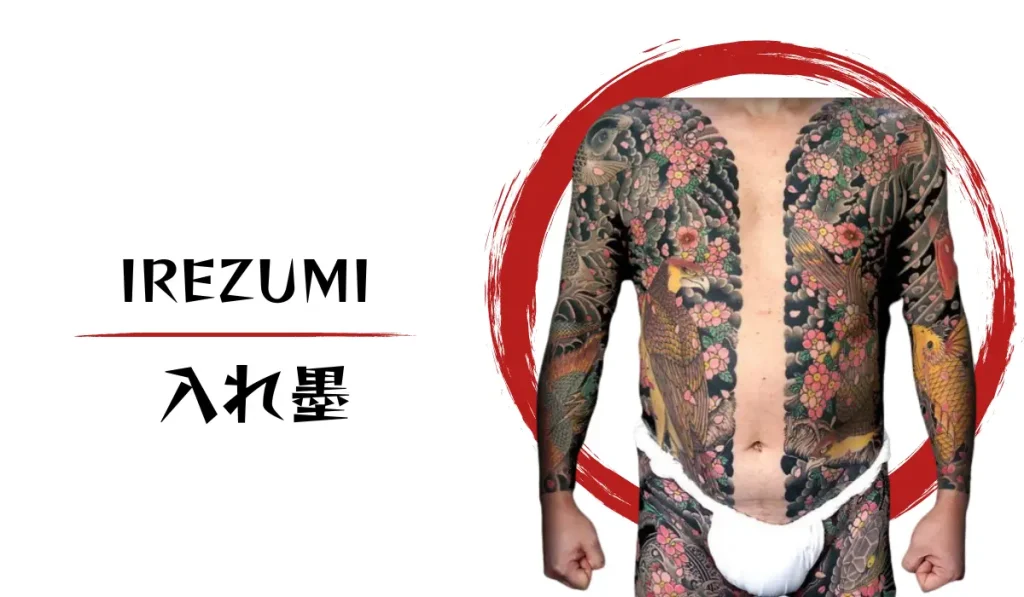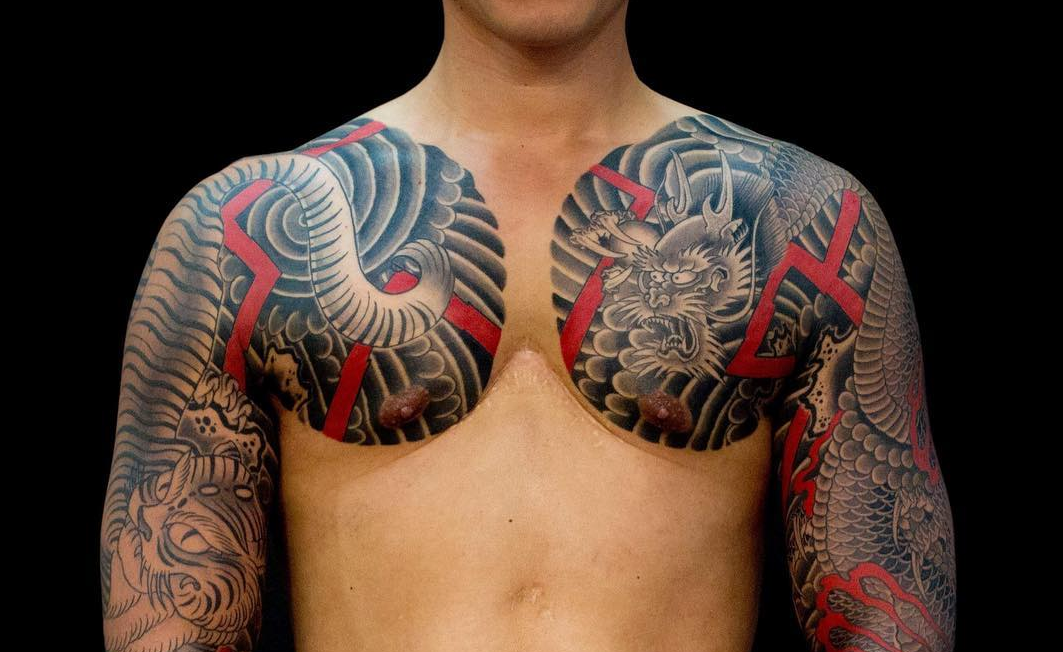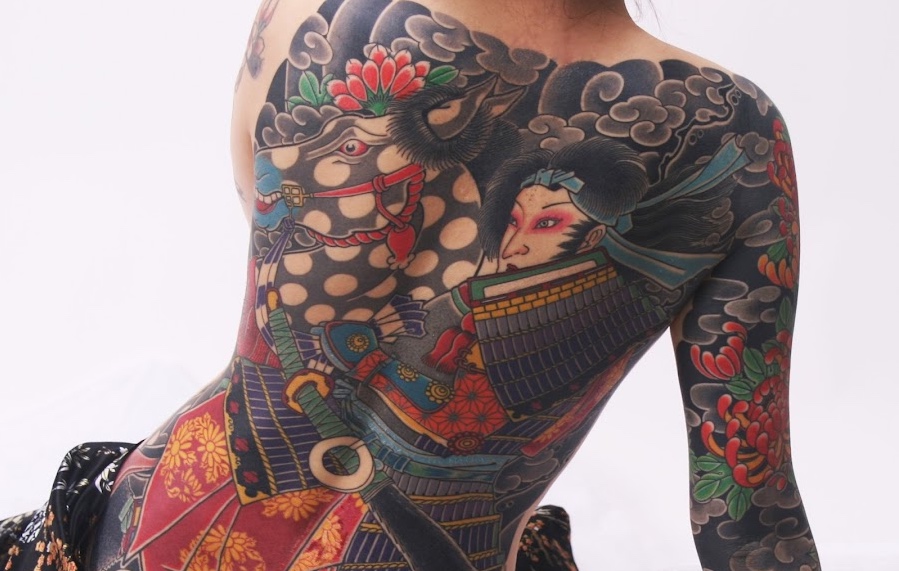

Japanese Irezumi tattoos, a Japanese body art, have become part of the cultural heritage of the Land of the Rising Sun. Featuring designs rich in symbolism, striking colors and profound beauty, Irezumi tattoos are not just a form of painting on the skin, but also a form of cultural expression that has continued to evolve throughout Japan’s history.
Irezumi tattoos have deep roots in Japanese history, dating back to ancient times and flourishing during the Edo period (1603-1868). They were originally practiced by marginalized members of society, such as butchers and convicts, before eventually being adopted by samurai heroes as a symbol of courage and endurance in battle.
Each element in an Irezumi tattoo has its own meaning. Classic motifs include dragons, cherry blossoms, samurai and Shinto deities. The dragon, as one of the most common motifs, symbolizes strength and protection, while cherry blossoms depict beauty and coolness. The combination of these symbols in a single tattoo creates a complex and profound narrative.
The process of creating an Irezumi tattoo involves the high craftsmanship of a skilled tattoo artist (horishi). The use of traditional handpoke techniques and modern machinery helps create intricate details. An Irezumi tattoo can take months or even years to complete, depending on the size and complexity of the design.

Spiritual and Social Meanings of Irezumi
Irezumi is not just body art; these tattoos also have deep spiritual and social significance. Over time, tattoos became a symbol of elegance and courage, but were also associated with social stigmatization. Initially, tattoos were used as a sign of identification for prisoners, but over time, they became more and more accepted in Japanese society.
Modern Change of Perception
Although tattoos were initially associated with crime and criminality, Japanese society’s views on tattoos began to change. In this modern era, Irezumi tattoos are gaining popularity and are considered an appreciated art form. Some famous tattoo artists such as Horiyoshi III and Shige continue to create works that create a bridge between tradition and innovation.
Honoring Cultural Heritage
Today, Irezumi tattoos are not only gaining recognition in Japan, but also attracting international attention. Art exhibitions, tattoo festivals, and documentaries about the art are increasingly highlighting the beauty and complexity of Irezumi tattoos. In this way, this cultural heritage continues to be preserved and honored by younger generations and art enthusiasts around the world.

Japanese Irezumi tattoos are not just ordinary body art; they reflect history culture, and beauty involving a skillful creation process. While its traditions still remain strong, Irezumi tattoos are constantly evolving and adapting to changing times. By honoring traditional values while opening up to innovation, Irezumi tattoos continue to be a badge of pride for the Japanese people and art enthusiasts around the world.